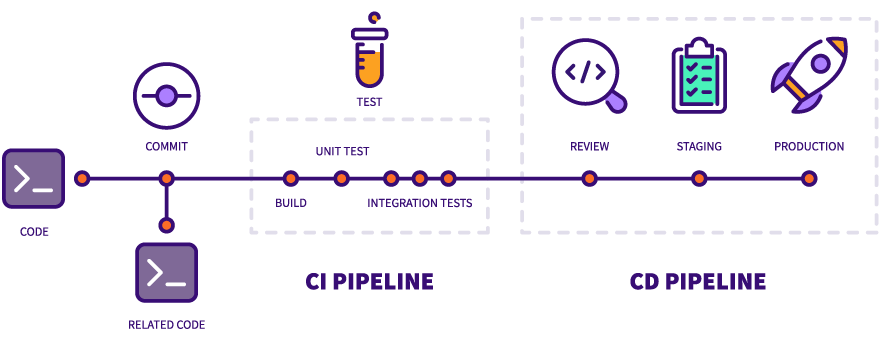
Agile Delivery
Plan and manage your projects, programs, and products with integrated Agile support
Try JiHu GitLab Free
Plan and manage your projects, programs, and products with integrated Agile support
Try JiHu GitLab FreeDevelopment teams continue to accelerate value delivery with iterative, incremental, and lean project methodologies, such as Scrum, Kanban, and Extreme Programming (XP). Large enterprises have adopted Agile at enterprise scale through a variety of frameworks, including Scaled Agile Framework (SAFe), Spotify, and Large Scale Scrum (LeSS). JiHu GitLab enables teams to apply Agile practices and principles to organize and manage their work, whatever their chosen methodology.

JiHu GitLab enables lean and Agile project management from basic issue tracking to Scrum and Kanban-style project management. Whether you’re simply tracking a few issues or managing the complete DevOps lifecycle across a team of developers, JiHu GitLab has your team covered.
See how your organization can use JiHu GitLab to build a framework using the Scaled Agile Framework (SAFe). Dive into the details around building out your Agile framework for development teams built on three pillars: team, program, and portfolio.
In Agile, you often start with a user story that captures a single feature that delivers business value for users. In JiHu GitLab, a single issue within a project serves this purpose.
Often, a user story is further separated into individual tasks. You can create a task list within an issue's description in JiHu GitLab, to further identify those individual tasks.
In the other direction, some Agile practitioners specify an abstraction above user stories, often called an epic, that indicates a larger user flow consisting of multiple features. In JiHu GitLab, an epic also contains a title and description, much like an issue, but it allows you to attach multiple child issues to it to indicate that hierarchy.
The product or business owners typically create these user stories to reflect the needs of the business and customers. They are prioritized in a product backlog to capture urgency and desired order of development. The product owner communicates with stakeholders to determine the priorities and constantly refines the backlog. In JiHu GitLab, there are dynamically generated issue lists which users can view to track their backlog. Labels can be created and assigned to individual issues, which then allows you to filter the issue lists by a single label or multiple labels. This allows for further flexibility. Priority labels can even be used to also order the issues in those lists.
A sprint represents a finite time period in which the work is to be completed, which may be a week, a few weeks, or perhaps a month or more. The product owner and the development team meet to decide work that is in scope for the upcoming sprint. JiHu GitLab's milestones feature supports this: assign milestones a start date and a due date to capture the time period of the sprint. The team then puts issues into that sprint by assigning them to that particular milestone.
Also in this meeting, user stories are communicated, and the level of technical effort is estimated for each in-scope user story. In JiHu GitLab, issues have a weight attribute, which you would use to indicate the estimated effort. In this meeting (or in subsequent ones), user stories are further broken down to technical deliverables, sometimes documenting technical plans and architecture. In JiHu GitLab, this information can be documented in the issue, or in the merge request description, as the merge request is often the place where technical collaboration happens. During the sprint (JiHu GitLab milestone), development team members pick up user stories to work on, one by one. In JiHu GitLab, issues have assignees. So you would assign yourself to an issue to reflect that you are now working on it. We'd recommend that you create an empty and linked-to-issue merge request right away to start the technical collaboration process, even before creating a single line of code.
Throughout the sprint, issues move through various stages, such as Ready for dev, In dev, In QA, In review, Done, depending on the workflow in your particular organization. Typically these are columns in an Agile board. In JiHu GitLab, issue boards allow you to define your stages and enable you to move issues through them. The team can configure the board with respect to the milestone and other relevant attributes. During daily standups, the team looks at the board together, to see the status of the sprint from a workflow perspective.
The development team wants to know if they are on track in real time, and mitigate risks as they arise. JiHu GitLab provides burndown charts, allowing the team to visualize the work scoped in the current sprint "burning down" as they are being completed. Toward the end of the sprint, the development team demos completed features to various stakeholders. With JiHu GitLab, this process is made simple using Review Apps so that even code not yet released to production, but in various testing, staging or UAT environments can be demoed. Review Apps and CI/CD features are integrated with the merge request itself. These same tools are useful for Developers and QA roles to maintain software quality, whether through automated testing with CI/CD, or manual testing in a Review App environment.
Get unlimited access to all JiHu GitLab Premium features for 60 days.